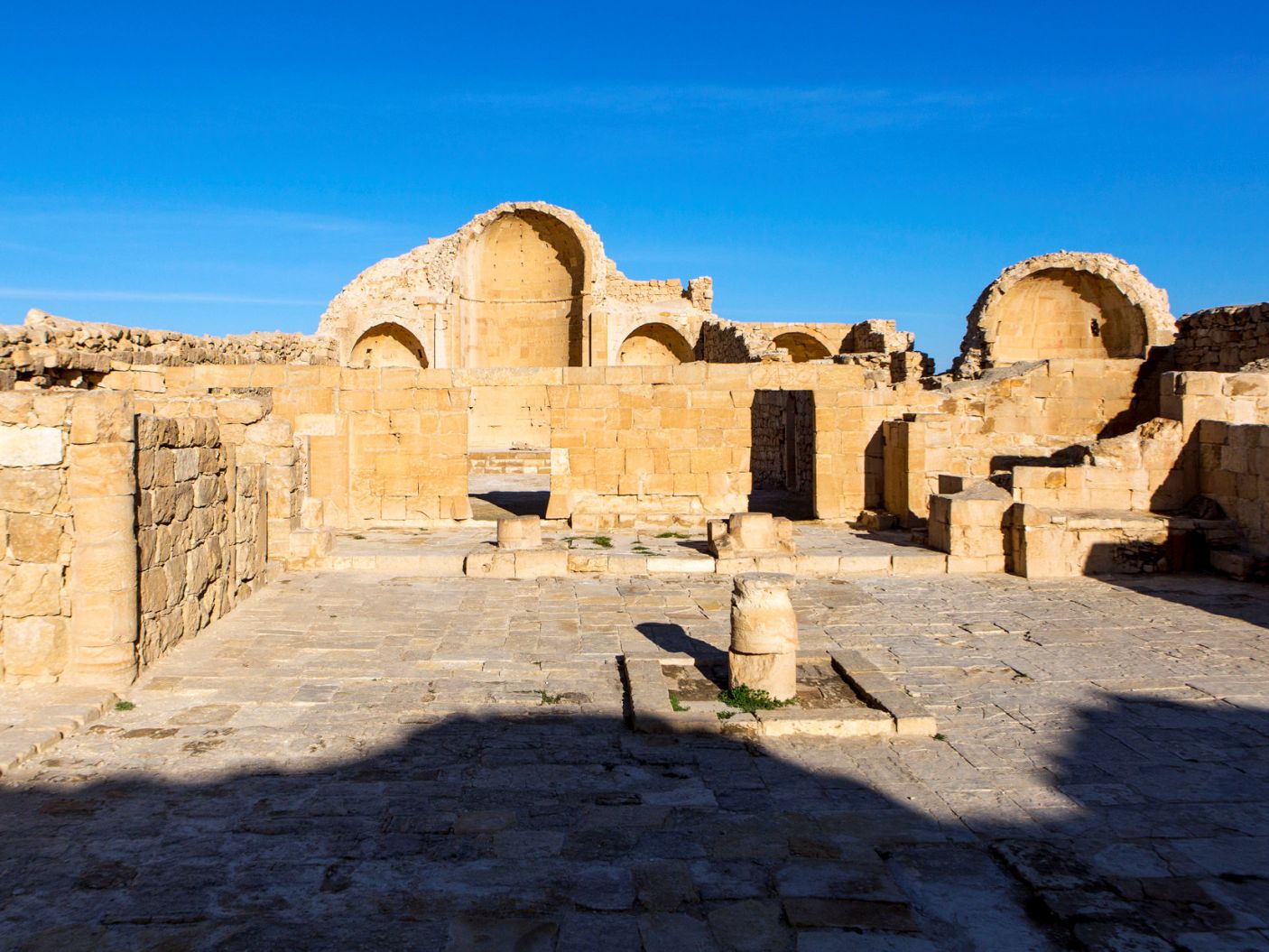
A 1,500-year-old wall painting of Jesus Christ has been found in an abandoned Byzantine church in Israel’s Negev desert. The site has been known to archaeologists for almost 150 years, but new research has identified the faint image as a youthful Messiah with short, curly hair, rather than traditional depictions of him with long hair and a beard.
“His face is right there, looking at us,” art historian Emma Maayan-Fanar told Haaretz of realizing that the painting depicted Christ. She is the lead author of an article published over the summer in the journal Archaeology about recent findings in the ruins of the Byzantine farming village Shivta, discovered in 1871 by explorer Edward Henry Palmer.
At its peak in the fifth to sixth century, Shivta, which was active for some 650 years, was home to three early Christian churches. The poorly preserved painting is located above the baptismal font, and likely depicts Christ’s baptism at the hands of John the Baptist, a popular scene in early Christian and Byzantine art.
The wall painting “belongs to the iconographic scheme of a short-haired Christ, which was especially widespread in Egypt and Syro-Palestine, but gone from later Byzantine art,” the article explains. “Christ’s depiction as a youth corresponds to the symbolic notion of baptism as a rebirth.”
A plan of Shivta showing the locations of its churches. Photo by Dror Maayan.
Archaeologists had noted the presence of murals in the church back in the 1920s, but no one had investigated further. A fact that isn’t surprising given that they were located high up on the church ceiling, badly damaged and covered in centuries of dirt.
A second painting in Shivta shows Jesus’s transfiguration, but his face has been erased over the century.
The discovery of early Christian art at Shivta is especially significant as little Byzantine art from this period survives. In the eighth century, the use of religious imagery was banned during the first of two periods of Byzantine iconoclasm.
The face of Jesus as seen in an ancient painting discovered in a church in Shivta. Photo by Dror Maayan.
The earliest known image of Jesus dates from between 233 and 256, and was found at the Dura-Europos church in Syria.
There are very few surviving images of Jesus from antiquity in Israel and, according to Maayan-Fanar and her team, no other examples of a baptism of Christ scene from the pre-iconoclasm period have ever been found on an archaeological site. As such, the article notes, these artworks “can illuminate Byzantine Shivta’s Christian community and Early Christian art across the region.”